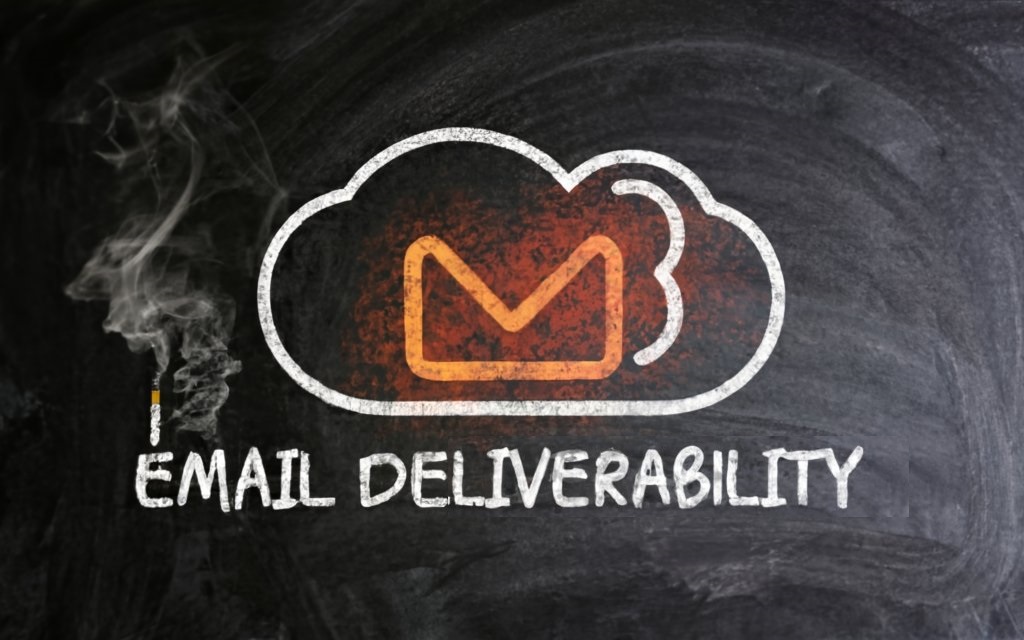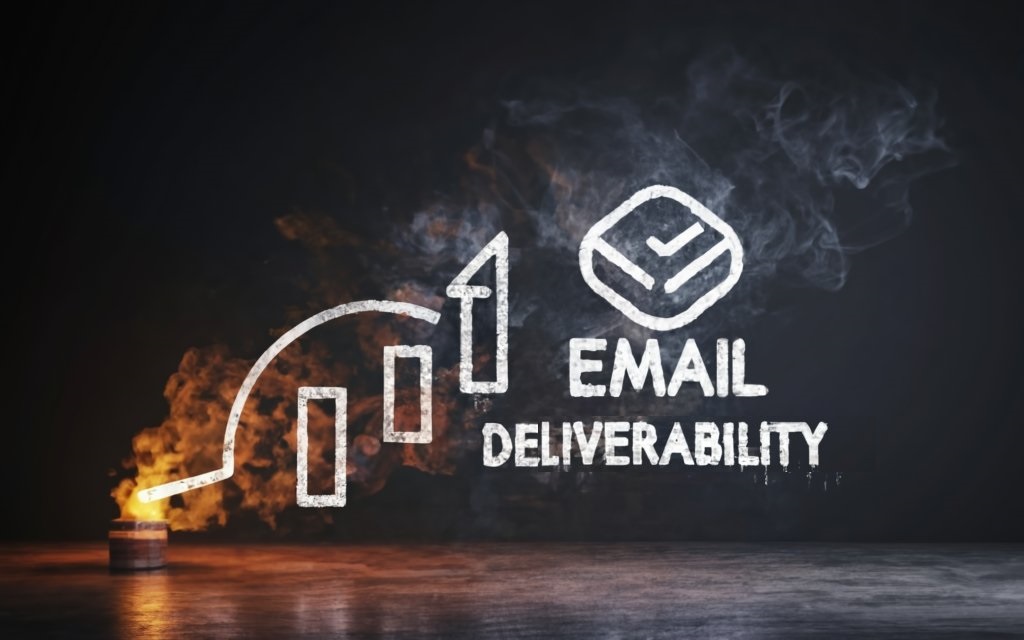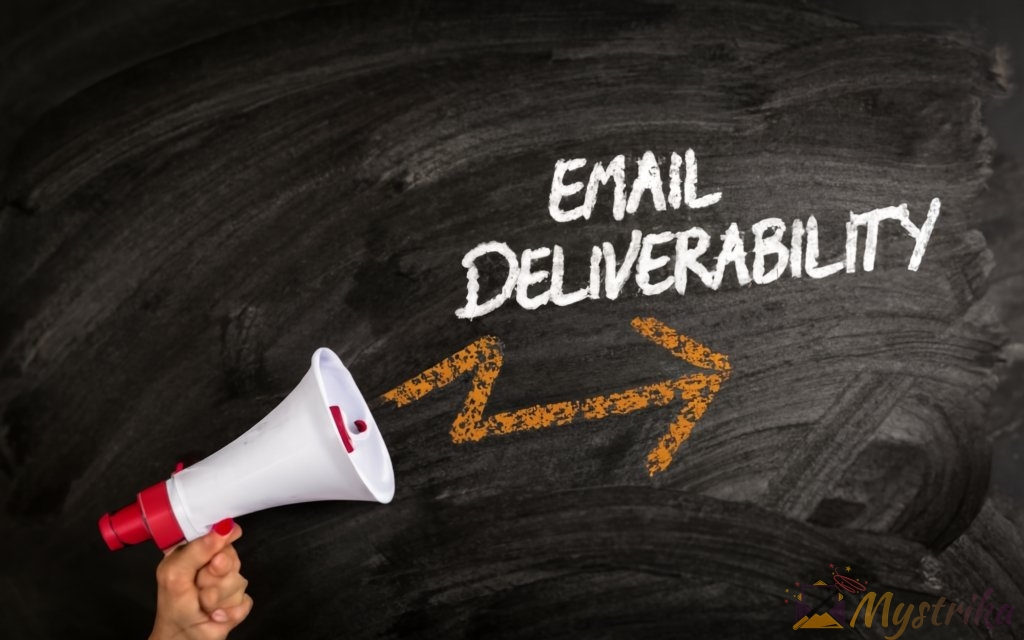Forget the spam folder – your emails deserve better! 📬 Understanding the art and science behind email deliverability is the key to unlocking the coveted inbox.
This comprehensive guide explores all the factors impacting your inbox placement rates – from sender reputation to engagement metrics – and actionable solutions to get your messages in front of more readers.
You’ll learn tactical tips and advanced tools – including deliverability must-haves like warmup and inbox rotation – empowering your emails to reliably land in inboxes instead of getting trapped as spam. Ready for more opens, clicks, and results from your campaigns? Let’s dive in!
What is Email Deliverability and Why Does it Matter?
Email deliverability refers to the percentage of emails from a sender that arrive in the recipient’s inbox as opposed to getting filtered as spam or bounced. It measures your ability to reliably have your messages delivered to your intended audience.
Defining Email Deliverability
Deliverability is commonly defined as the rate at which emails reach the inbox. For example, if you send an email campaign to 1,000 subscribers and 900 emails arrive in inboxes, your deliverability rate is 90%.
Deliverability depends on many factors like sender reputation, authentication protocols, list quality, email content, and engagement metrics. High deliverability ensures your recipients actually get to read your messages.
How Deliverability Differs from Delivery
Delivery rate measures the percentage of total sent emails that are accepted by the receiving server, regardless of where they ultimately end up. An email can be successfully delivered even if it goes to the spam folder or is trashed unread.
Deliverability measures the inbox placement rate, indicating how many recipients actively received and engaged with your email campaigns. Deliverability is a more meaningful success metric than bare delivery rate.
For example, an email sent to 100 people with 98% delivery rate but only 65% deliverability rate means 98 people received the email, but only 65 actually got it in their inbox.
Why High Deliverability is Crucial for Email Marketing
Email is the most ubiquitous marketing channel, with 4.3 billion users worldwide. But crowded inboxes mean most people ignore emails that aren’t from recognized senders.
High deliverability ensures your messages reach your audience and serve their purpose, whether driving conversions, traffic, engagement, or other goals. Consider these deliverability benefits:
- Increased email opens: Over two-thirds of email recipients open newsletters arriving directly in their inbox. Deliverability boosts visibility.
- More clicks and conversions: Emails in the primary inbox see higher interaction. HubSpot found emails sent to spam had a click-through rate under 0.1%, while inbox emails reached over 5% CTR.
- Improved sender reputation: Recipients engaging with your inbox emails signal to providers you’re a legitimate sender. This improves your deliverability further through positive feedback loops.
- Lower unsubscribe and complaint rates: Irrelevant or unexpected emails in the promotions tab cause subscribers to disengage. Inbox placement aligns with subscriber expectations.
- Trust and brand consistency: Recipients build familiarity with senders in their primary inbox. A consistent brand experience fosters engagement and loyalty.
Maximizing deliverability is crucial for succeeding with email. As GMass notes, their users see 99% inbox placement rates, driving higher response rates than any other platform. Optimizing your strategy around deliverability is worth the investment.

Key Factors That Impact Email Deliverability Rates
Many interconnected factors influence whether your emails reach inboxes or not. Understanding these key deliverability drivers allows you to optimize your strategy. Let’s explore the primary elements shaping your inbox placement rates.
Domain and IP Reputation
Email providers track each sender’s domain and IP reputation to filter out spammers and allow legitimate mail. Bad reputation causes messages to go to spam.
Reputation depends on:
- Engagement metrics – High open, click, and reply rates signal an engaged audience.
- Bounce rate – Hard bounces harm reputation as they indicate invalid addresses. Keep lists clean.
- Block, spam & complaints – These direct user signals damage reputation. Easy opt-outs and relevant content reduce complaints.
- Sending infrastructure – Shared IPs get bogged down by other senders’ reputations. Dedicated IPs give you control.
- Authentication – Proper SPF, DKIM, and DMARC settings verify you as a valid sender.
Tips to improve domain/IP reputation:
- Warm up new IPs by gradually increasing sending volume. Don’t abruptly send large volumes which get flagged as spam.
- Monitor metrics using tools like 250ok to catch issues early.
- Use a service like Mystrika for inbox rotation across IPs and handle warming up and reputation management behind the scenes.
Engagement Metrics Like Opens, Clicks, Unsubscribes
Engagement metrics directly impact your sender score. High open and click rates signal users find your emails useful. Low engagement is usually a content issue.
Tips to boost engagement:
- Personalize email content using merge tags and transactional triggers. Contextual messages see higher engagement.
- Test different subject lines to find what piques interest for each segment. Tools like Mystrika allow subject line A/B testing.
- Send targeted and relevant emails catering to different audiences. Don’t use a one-size-fits-all approach.
- Analyze performance and double down on what works. The below table shows a sample analysis:
| Campaign | Open Rate | CTR |
| Product Updates | 18% | 12% |
| Cart Abandonment | 29% | 23% |
| Holiday Promotions | 12% | 8% |
Here we see cart abandonment emails outperform other segments – a signal to send more of them.
List Quality and Hygiene
Low quality, outdated lists drag down deliverability. Here’s how to maintain list hygiene:
- Confirm opt-in with double opt-in while collecting emails, asking subscribers to consent again via confirming their signup.
- Re-engage inactive subscribers who haven’t opened in 6+ months to revive interest before removing them.
- Prune hard bounces immediately since you know those emails are invalid.
- Unsubscribe in 1-click to easily purge recipients who mark your mail as spam repeatedly.
- Verify addresses through services like NeverBounce before sending to catch typos and invalid data.
- Scrub against spam traps which are fake addresses specifically created to catch spammers when emailed.
With clean, engagement-driven lists, your future emails are poised for higher inbox placement rates.
Authentication Protocols Like SPF, DKIM, and DMARC
Email authentication verifies your domain identity and ensures providers accept your mail. Not setting up protocols like SPF, DKIM, and DMARC properly can undermine deliverability.
Here’s how these protocols work together:
- SPF confirms the sending servers are authorized to send mail from your domain.
- DKIM cryptographically validates the email content wasn’t tampered with in transit.
- DMARC aligns SPF and DKIM to prevent spoofing and impersonation.
Setting up authentication correctly demonstrates you’re a legitimate, trusted source of email and improves inbox placement.
Email Content Relevance and Quality
Email providers scan message content for spam triggers like suspicious links, “spammy” words, or image-heavy emails. Relevant, personalized content gets delivered.
Follow these content best practices:
- Use subscribers’ names and personalized dynamic content to demonstrate relevance.
- Ensure correct grammar and spelling as errors signal potential spam.
- Link to reputable domains and avoid shortening links which obfuscate destinations.
- Limit images as spammers use them to hide text from spam filters. Text-heavy newsletters perform better.
- Avoid excessive punctuation and CAPS which feel like shouting.
- Send emails users asked for like post-signup welcome series or transactional notifications. Expected, useful emails hit the inbox.
With engagement-driven, personalized content, you reassure providers your emails are wanted which boosts inbox placement.
Infrastructure Factors Like Warm-Up and Blacklists
Your sending infrastructure also impacts deliverability. Watch for:
- Shared IPs: Other SendersCan Negatively Impact Your Reputation. Consider Dedicated IPs Free Of This “Neighborhood Effect”.
- Maximum Sending Limits: Throttles and monthly sends caps prevent spamming but can constrain your volume. Lift these to grow.
- Warming up IPs: Spam filters flag sudden spikes in volume from new IPs. Gradually ramp up sends to warm IPs.
- ISP blacklist monitoring: Stay off blacklists. Use tools like Mystrika’s blacklist check to monitor status.
- Geographic sending limits: Route through local IPs to avoid cross-border spam flags.
With deliverability-optimized infrastructure, your emails reliably hit the inbox. Monitor blacklists, warm up, and fine-tune based on traffic patterns.
Step-by-Step Guide to Improve Inbox Placement
Optimizing deliverability takes work, but following this step-by-step guide will help you build an effective strategy for reliable inbox delivery.
Clean and Segment Your Email Lists
Messy, outdated lists tank deliverability. Keep yours pristine with:
1. Confirm opt-in
- When users sign up, send a confirmation email and only add them after they click the verify link. This confirms intention to receive your emails.
2. Prune hard bounces
- Permanently remove any addresses that return hard bounces immediately to maintain list accuracy.
3. Remove spam complainers and non-openers
- Filter out users who haven’t opened in 6+ months or frequently mark your mail as spam. They won’t convert.
4. Scrub against spam traps
- Spam traps are fake email addresses specifically created to identify spammers. Use a service like NeverBounce to validate addresses against 200+ spam trap lists before sending.
5. Segment by engagement
- Group users by opens, clicks, and conversion activity so you can customize engagement approaches. Top engaged segments get priority.
With a segmented, verified list, you’ve laid the foundation for inbox success.
Optimize Your Sender Reputation
Improving your domain and IP reputation ensures deliverability, starting with:
1. Implement email authentication
- Set up SPF, DKIM, and DMARC records for your sending domain. This verifies you as a legitimate sender.
2. Monitor sender reputation
- Use tools like SendCheck to check your current domain and IP reputation with major ISPs.
3. Consider a dedicated IP
- Dedicated IPs isolate your sending reputation from other users on shared IPs. They’re an easy deliverability win if you can afford them.
4. Analyze traffic patterns
- Identify high-volume sending periods and geographical traffic concentrations you’ll need to optimize deliverability for.
With strong authentication and monitoring, your sender reputation will improve as you demonstrate consistently positive engagement.
Follow Deliverability Best Practices
Optimizing your sending process impacts deliverability:
1. Warm up new IP addresses
- When starting with a new IP, gradually increase your volume week-over-week to avoid a red flag for spamming.
2. Use services like Mystrika’s Unibox
- Inbox rotation spreads volume across beautiful IP addresses with established reputations to ensure deliverability.
3. Send from the recipient’s country
- Route each message from an in-country IP for lower spam risk.
4. Personalize content
- Dynamic merge tags, personalized subject lines, and contextual messaging based on user data get higher engagement.
5. Follow email best practices
- Proper branding, addresses, grammar, and avoiding spam trigger words keep your messages out of the spam folder.
Fine-tuning your sending process significantly impacts inbox placement over time.
Analyze Metrics and Continuously Improve
Ongoing optimization based on data is key for deliverability.
1. Track open and click rates
- High open and click rates indicate your messages are engaging and useful for your audience.
2. Breakdown complaints and non-openers
- Analyze these segments further to identify any content, targeting, or segmentation issues reducing interaction.
3. Monitor placements
- Use read receipt tracking or an inbox placement tool to confirm which emails hit the primary inbox vs. other tabs.
4. Experiment and test improvements
- Try new subject lines, content formats, send times, or segments and monitor the impact on placements and engagement.
5. Listen to subscriber feedback
- Survey engaged users on what they find valuable and what could be better to guide optimizations.
Let data guide your strategy as you continually strive to improve inbox placement over time. Small tweaks add up.
Use Features Like Warmup, Dedicated IPs, and Custom Tracking Domains
Technical features from email providers can maximize deliverability:
- Warm up gradually introduces new IPs or domains safely. This avoids large-scale spam flags.
- Dedicated IPs give your domain the highest reputation isolation and control.
- Custom tracking domains let you brand tracking links for familiarity. Default tracking URLs are opaque and may cause distrust.
- Inbox rotation cycles delivery across good reputation IPs to avoid overloading any single IP’s sending limits.
- Email authentication like SPF, DKIM, and DMARC verify your identity as a legitimate sender.
- Subscriber seeding sends new lists in small batches to high reputation inboxes first to build trust.
- Blacklist monitoring tools like Mystrika’s blacklist check alert you if blacklisted so you can delist quickly.
Leverage deliverability-focused email platform features and tools to put your campaigns in the best position for inbox placement success.

Advanced Strategies and Tools for Maximizing Deliverability
Once you’ve mastered the fundamentals, more advanced tactics and solutions can take your deliverability to the next level.
Leverage Provider-Specific Features Like Gmail Annotations
Major email providers give senders tools to boost inbox placement on their platforms:
- Gmail Annotations – Markup emails to highlight key sections. Gmail scans messages in real-time and may deliver annotated content to the primary tab based on user interest.
- Office 365 Specific Send Times – See optimal send times for the Office 365 inbox based on user engagement data.
- AOL Importance Markers – Flag emails as High Importance to indicate they deserve inbox placement.
- Yahoo Content Previews – Provide a short content preview text Yahoo will display to help users decide if they want to open your email.
Take advantage of insider knowledge email providers give into their algorithms. Optimize your campaigns for each platform.
Implement Unique Deliverability Solutions Like Mystrika’s Inbox Rotation
Specialty deliverability tools give you added advantages:
- Inbox rotation – Rotate delivery across good reputation IPs to spread volume instead of overloading a single IP. This ensures your emails get through despite limits. Providers like Mystrika offer robust inbox rotation technology.
- Warmup services – Gradually warm up cold IP addresses on your behalf to build positive reputations safely over time.
- Cloud-based IP provisioning – Scale up and down dedicated IPs as your email programs grow. Add deliverability without managing infrastructure.
- Subscriber seeding – Send new lists in small batches to high-quality inboxes first to establish sender credibility before expanding sends.
- Automated IP cycling – Programmatically cycle through IP addresses in your account based on factors like reputation and sending limits to optimize deliverability.
Specialty solutions give you advanced capabilities purpose-built for deliverability beyond basic email platforms.
Automate Deliverability Testing and Optimization
Automated tools streamline optimizing deliverability:
- A/B testing – Test changes like subject lines against a holdout for impact analysis. Providers like Mystrika have built-in A/B testing.
- Email testing automation – Automatically verify SPF/DKIM, scan content, and confirm inbox placements for every send through API integrations.
- Subscriber health monitoring – Get alerts if high volumes of subscribers complain as spam or churn to nip issues and save reputation.
- Scheduled inbox placement checks – Use a monitoring tool like MailTester or Mail-Checker on an ongoing basis to catch deliverability changes quickly.
Automation eliminates tedious deliverability tasks so you can focus on high-impact optimization.
Invest in Ongoing Deliverability Consultancy and Monitoring
Even experts leverage specialists to maximize deliverability and stay cutting edge.
- Consultancy for inbox placement – Leverage specialists to audit and enhance your ecosystem, processes, and campaigns. They identify growth areas.
- Ongoing deliverability monitoring – Track key metrics like spam complaints, bounces, placements, and blacklist status across providers to catch issues proactively.
- Optimizing and testing support – Use qualified experts to A/B test campaigns and fine-tune elements like content, segmentation, timing, and sender profiles for improved performance.
- Deliverability training – Learn industry best practices through courses and guidance to make informed decisions in-house.
Services like Deliverability.com offer managed inbox placement solutions, combining software and human expertise to excel at deliverability.
Ongoing optimization is easier with experts who specialize in it. A deliverability partner helps you execute and enhances strategy.

FAQs About Email Deliverability
Let’s explore some frequently asked questions about improving email deliverability and inbox placement.
What is a good deliverability rate benchmark?
A deliverability rate above 90% is considered good by industry standards. 85% is average, and under 80% signals issues needing optimization.
However, the exact target depends on your industry and email types. For example:
- B2C promotional newsletters often see 70-80% deliverability.
- B2B transactional emails and alerts expect above 95%.
- Deliverability for cold outreach to purchased lists ranges from 60-75%.
Test your target metric against industry benchmarks to evaluate your deliverability.
How often should you check your email authentication and domain health?
Check email authentication records like SPF, DKIM, and DMARC at least once per quarter – more often if making DNS changes.
Monitor your domain’s sender reputation weekly when starting out and monthly after establishing strong deliverability. Reputation can change quickly.
Use real-time blacklist monitoring through services like Mystrika to catch issues fast. Blacklists severely impact sending capability if not remedied promptly.
Ongoing monitoring ensures your domain infrastructure facilitates deliverability instead of undermining it.
What are some common inbox placement issues and solutions?
Here are common deliverability issues and troubleshooting tips:
1. Emails consistently go to spam
- Verify SPF/DKIM/DMARC records are set up for your domain and correct. Check sender reputation and fix any blacklistings.
2. Sudden drop in inbox placement
- A spike in complaints or unsubscribes likely damaged your sender rating. Analyze why and course correct content.
3. Highly engaged subscribers now going to spam
- As your list grows, new subscribers with low engagement drag placements down. Segment highly engaged users.
4. Very low future performance predicted
- Aggressively audit your ecosystem: authorization records, IP reputation, complaint rates, content triggers, etc. Identify weak points impacting you.
5. Large batch of emails suddenly bounced
- Your email list likely has serious data quality issues. Invest time in list cleaning and aggressively pruning bad data.
Address issues early before temporary algorithm fluctuations cause lasting reputation damage.
What deliverability metrics should you monitor?
- Bounce rate: Monitor address-level bounces signaling list decay.
- Spam complaints: Complaints directly hurt your sender rating. Reduce them.
- Unsubscribe rate: Assess if your content or frequency drives unsubscribes.
- Placement rate: Where emails land – inbox, spam folder, promotions tab etc.
- Engagement rate: Open and click rates show ongoing audience interest.
- Email authentication: Monitor SPF/DKIM/DMARC for any issues undermining authenticity.
- Reputation scores: Sender rating and blacklist status with major ISPs.
Ongoing performance metrics identify emerging deliverability issues early. Track them across campaigns.
How can you tell if your emails are going to spam?
Signs your emails get flagged as spam:
- Open and click rates drastically lower than initial send
- Subscribers say they aren’t getting your emails
- You aren’t getting replies from prospective outreach
- Users who engaged previously now ignoring emails
- Analytics show growing spam complaints
Ways to confirm spam filtering:
- Check inbox placement using read receipt tracking
- Set up spam seed accounts and monitor where emails land
- Review inbox placement reports in your email tool
- Ask subscribers to check spam folders and report back
Other Common Questions:
Q: What is a good target deliverability rate?
A: Aim for above 90% deliverability to be considered good. 85% is average and under 80% needs improvement. However, the target depends on your industry and email types.
Q: How can I check the health of my email authentication and domain?
A: Monitor your SPF, DKIM, and DMARC records quarterly. Check sender reputation and blacklist status weekly when starting out and monthly once stable.
Q: Why did my deliverability suddenly drop?
A: Sudden drops are usually due to spikes in complaints or unsubscribes damaging your sender rating. Analyze the cause and improve your content targeting.
Q: How do I know if my emails go to spam?
A: Indicators include lower-than-expected open rates, subscriber complaints of non-delivery, lack of responses, and increasing spam complaints in analytics.
Q: How can I increase user engagement with my emails?
A: Personalize content with merge tags, segment users, experiment with subject lines, target their preferences, and focus on creating relevant value in your emails.
Q: Should I warm up new IP addresses?
A: Yes, always gradually ramp up sending from new IPs to establish a good reputation and avoid being flagged as spam.
Q: How often should I prune and scrub my subscriber list?
A: Prune hard bounces and spam complainers immediately. For inactive subscribers, reengage first before removing. Scrub your list against spam traps quarterly.
Q: What are some deliverability best practices?
A: Authenticate with SPF/DKIM/DMARC, monitor sender reputation, optimize your infrastructure, follow email best practices, personalize content, and leverage deliverability technologies.
Q: How can I optimize my email footers?
A: Include your physical mailing address, safe unsubscribe option, link to your privacy policy, and contact information to build trust and compliance.
Key Takeaways on Maximizing Email Deliverability
Getting your emails reliably delivered to the inbox is crucial for email success. To recap, here are the key lessons:
- Monitor and optimize for inbox placement rate rather than just delivery rate. The inbox is what matters.
- Maintain squeaky clean lists, proper authentication, good engagement, and relevant content. These collectively build sender reputation.
- Follow deliverability best practices for warming up IPs, using dedicated IPs, personalizing content, and carefully managing subscriber relationships.
- Leverage speciality solutions like inbox rotation and subscriber seeding to lift deliverability through technology.
- Keep optimizing and testing new approaches. Small improvements compound. Analyze the impact and double down on what works.
- Seek help from deliverability specialists and consultants to identify gaps in your strategy. They bring expertise.
- Stay vigilant in monitoring metrics, platform inbox features, and reputation. Nip issues immediately to prevent lasting damage.
- Automate testing and verification processes to make ongoing optimization easier.
With a comprehensive strategy encompassing technology, processes, and expertise, you can claim your spot in the coveted primary inbox. Use these insights to engage audiences more effectively through email.

